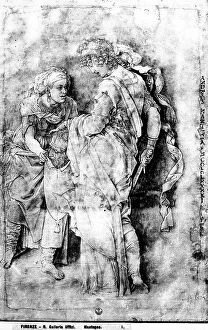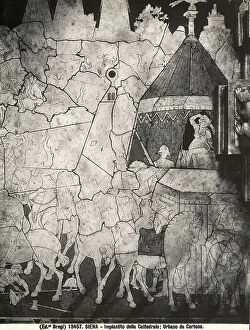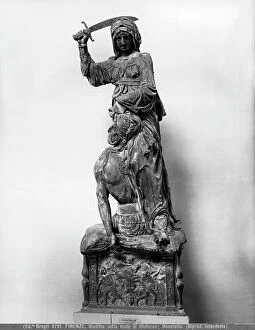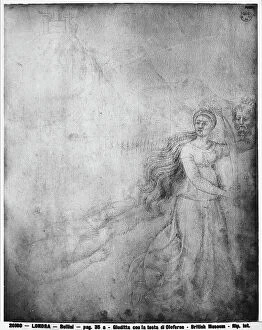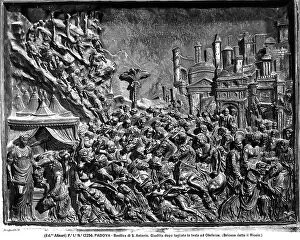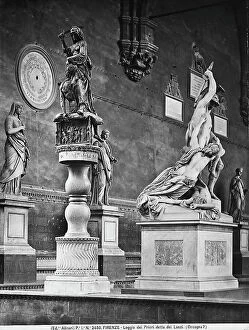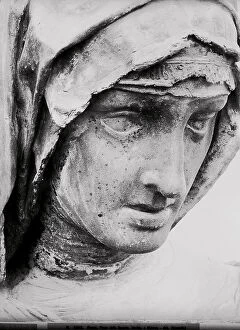Story Of Judith Collection
The captivating story of Judith has been immortalized through various artistic representations
For sale as Licensed Images
Choose your image, Select your licence and Download the media
The captivating story of Judith has been immortalized through various artistic representations. One such depiction is a stunning drawing by Andrea Mantegna, housed in the Gabinetto dei Disegni e delle Stampe at the Uffizi Gallery in Florence. The scene showcases Judith's valiant defense of Betulia, with a mesmerizing detail capturing the decapitation of Holofernes. Another remarkable portrayal can be found on the marble inlaid work adorning the floor of Siena Cathedral. This intricate artwork vividly depicts Judith's heroic act, along with an exquisite rendering of the city of Betulia. Donatello, a renowned sculptor from Florence, also contributed to this narrative with his bronze masterpiece displayed in Palazzo Vecchio's Sala dei Gigli. The sculpture portrays both Judith and Holofernes, showcasing Donatello's exceptional talent and attention to detail. Andrea Briosco created an impressive bas-relief featuring Judith holding Holofernes' severed head on the walls of Basilica di Sant'Antonio in Padua. This work exemplifies Briosco's skillful craftsmanship and ability to convey emotion through his art. Tiburzio Vergelli and Giovanni Battista Vitali collaborated on a magnificent bronze piece for Loreto's Sanctuary of the Holy Home. Their creation beautifully captures one pivotal moment from Judith's tale. Donatello continued to explore this theme later in his career, as seen in another striking sculpture now housed within Palazzo Vecchio’s Sala dei Gigli. This particular artwork focuses on minute details like a pillow beneath Holofernes' head and his lifeless hand resting beside it. Lastly, we have Donatello’s late work showcased originally at Loggia dei Lanzi but now located within Palazzo Vecchio’s Sala dei Gigli. The statue presents us with an intense close-up view of Judith’s face—a testament to Donatello's ability to convey the complexity of human emotions.

